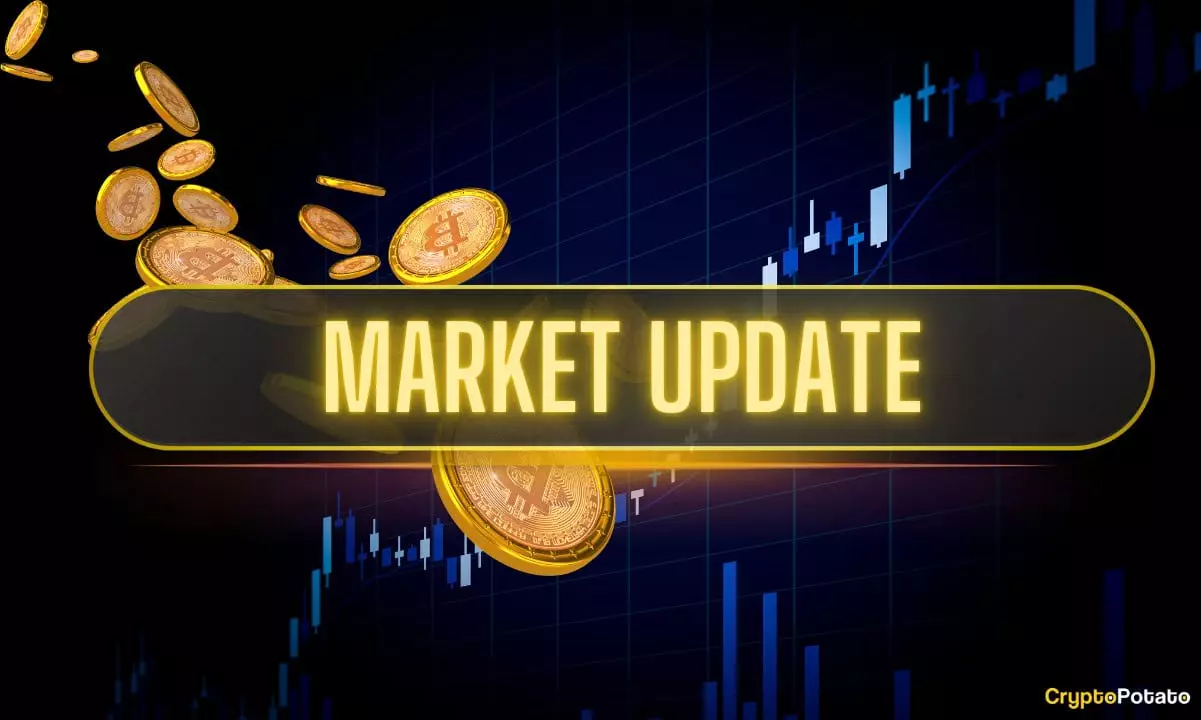In the whirlwind of cryptocurrency headlines, it’s tempting to get caught up in the thrill of new all-time highs and teetering market caps. However, beneath this shiny surface lies a fragile ecosystem, vulnerable to the same superficial gains that characterize speculative bubbles. Last week’s meteoric rise of Bitcoin beyond $123,000, while temporarily impressive, actually exposes a fundamental weakness in investor confidence and market stability. One must ask: are these gains truly sustainable, or are they merely a mirage fueled by speculative fervor and external stimuli?
The recent rally was bolstered by seemingly positive legislative developments in the United States, such as the passage of the GENIUS Act. Yet, political signals are notoriously volatile themselves, often offering fleeting encouragement rather than long-term stability. What appears as a bullish catalyst today could easily morph into a bearish trigger tomorrow, especially when driven more by narratives and hype than tangible adoption or technological breakthroughs. Consequently, the market’s resilience—portrayed now as unstoppable—may be deceptive, as underlying vulnerabilities continue to fester beneath the surface.
The Mirage of Parabolic Growth and Overheated Markets
Much of the recent exuberance is fueled by a perception that Bitcoin and other major cryptocurrencies are finally breaking free from their cyclical bottlenecks. Nonetheless, noteworthy price movements, especially those that quickly hit new highs and then retrace, are indicative of a volatile environment that is anything but healthy. The hit to $123,000 in BTC was followed by rapid corrections—a textbook sign of a market intoxicated by recent gains rather than solid fundamentals.
This pattern of sharp fluctuations undermines the narrative of long-term growth and raises red flags about market overheating. When a market hits such extreme levels—where Bitcoin’s realized cap surpasses $1 trillion—it invites questions: are we witnessing a sustainable ascent, or is this a classical blow-off top? History suggests that markets driven primarily by speculative sentiment are prone to dramatic reversals, often leaving latecomers holding the bag.
The prominence of altcoins such as Ripple, Ethereum, and others posting double-digit weekly gains could further distort perceptions of stability. These gains, while impressive on paper, might simply be short-lived corrections in an otherwise overheated market. The danger lies in investors mistaking momentary euphoria for a sign of systemic strength, thereby inflating a bubble ripe for burst.
Regulatory and Technological Concerns: The Hidden Crack in the Foundation
Despite the apparent strength of the recent rally, it would be shortsighted to ignore the underlying risks that threaten the longevity of this surge. Regulatory uncertainty remains a significant obstacle, with some legislations being praised as catalysts, yet the overall landscape remains unpredictable. Shifting policies, crackdowns, or adverse regulatory decisions could swiftly puncture the bubble, much like recent corrections have demonstrated.
Technologically, the market’s confidence is also challenged by looming threats such as quantum computing. Developers have raised alarms that nearly a quarter of Bitcoin’s network might be vulnerable to future quantum attacks, urging for upgrades that lag behind the rapid pace of technological innovation. Ignoring such warnings in the face of exuberance is akin to building castles on shifting sands—what seems solid today may be rendered obsolete or insecure tomorrow.
Meanwhile, institutional participation—particularly through ETFs and other investment vehicles—presents both a boon and a potential pitfall. The influx of billions into Ethereum-focused ETFs signals growing mainstream acceptance, yet it also raises questions about whether this inflow is driven by genuine utility or mere speculation. When sizable capital flows are contingent on short-term gains, the perception of stability becomes dangerously illusory.
The Fallacy of Lasting Gains in a Short-Term Market
Indeed, the insinuation that markets are perpetually ascending due to rising institutional backing and technological advancements is fundamentally flawed. The recent declines after BTC’s initial surge exemplify how fragile this optimism is. Once the momentum stalls, investors are quick to panic, precipitating sharp corrections that erode the gains of days or weeks prior.
The narrative that these peaks represent a ‘new normal’ is misleading. Market cycles are characterized by expansions and contractions—yet many have mistaken recent short-lived highs for an inflection point. This misinterpretation can lead to reckless investment decisions, fueling a cycle of boom and bust that damages genuine long-term investors.
The paradox is that, while some metrics like market cap and realized value reach record highs, the actual health of the ecosystem—its infrastructure, security, and regulatory environment—is not keeping pace. Instead, we’re witnessing a market driven more by hype, FOMO, and fleeting news cycles than by real adoption, technological security, or pragmatic use cases.
The Center-Right Perspective: A Call for Caution Over Euphoria
From a pragmatic center-right vantage point, the recent crypto frenzy raises alarms about governance, regulation, and sound financial practices. While blockchain technology harbors undeniable potential, the current environment is heavily skewed toward speculation, often at the expense of stability and responsible stewardship.
Regulators have rightly begun imposing frameworks to mitigate the risks associated with market manipulation and fraud. These measures should not be dismissed but embraced as necessary steps toward legitimizing the space. The market’s recent push to record valuations can only last if coupled with robust security, clear regulatory pathways, and technological readiness.
Investment strategies should prioritize sustainability over sensational gains. Building resilience through technological upgrades—such as quantum-resistant cryptography—and institutional oversight is crucial. Ignoring these risks in favor of short-term gains invites disaster in the form of mass corrections and loss of investor confidence.
In the end, the recent surge is emblematic of a speculative phase that, without proper oversight and technological maturity, threatens to undermine the credibility of the entire industry. It necessitates a cautious, disciplined approach—one that recognizes the underlying vulnerabilities and advocates for responsible progress rather than reckless euphoria.

